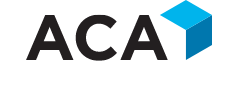
Trade and market surveillance software are critical enablers in the financial services industry to ensure market integrity, transparency, and regulatory compliance. With increasing trading activities, a growing variety of traded products, and technological advancements, the pressure on trade and market surveillance compliance functions has intensified. Let us look at the current trade and market surveillance state, outline the challenges and opportunities, and explore the trends and outlook for this essential function.
Current State of Trade and Market Surveillance
Trade and market surveillance involves monitoring trading activities to detect and prevent market manipulation, insider trading, and other forms of market abuse. Regulators and financial institutions employ sophisticated tools and technologies to compile and analyze vast amounts of data and identify potential market misconduct.
The current state of trade and market surveillance is characterized by the following:
Increasing regulatory requirements: Regulators worldwide have introduced stringent rules and regulations to promote market transparency, protect investors, and maintain market integrity. Examples include the European Union’s Market Abuse Regulation (MAR) and MiFID II, as well as the Dodd-Frank Act in the United States.
Technological advancements: The use of advanced analytics, artificial intelligence (AI), and machine learning (ML) has become increasingly prevalent in trade and market surveillance, allowing for more efficient and accurate detection of potential market abuse.
Challenges and Opportunities
Trade and market surveillance face several challenges and opportunities, including:
Data complexity and volume: The growth in trading activities and traded products generate vast amounts of data, making it difficult for compliance teams to monitor and analyze trading behavior effectively.
Advanced analytics and AI can help overcome this challenge by automating the processing and analysis of large volumes of data, identifying unusual trading patterns, and generating alerts for potential market abuse.
Evolving regulatory landscape: The continuously changing regulatory environment requires financial institutions to adapt their surveillance systems and processes regularly, posing a significant challenge.
Flexible and scalable surveillance systems can help organizations stay compliant with evolving regulations and adapt to new requirements as they emerge.
False positives: Traditional rule-based surveillance systems may generate numerous false positives, resulting in resource-intensive investigations and increased operational costs.
AI and ML technologies can help reduce false positives by refining alert generation and improving anomaly detection accuracy.
Trends and Outlook for Trade and Market Surveillance Software
The future of trade and market surveillance is likely to be influenced by several key trends:
Increased adoption of AI and ML: Financial institutions and regulators will continue to invest in AI and ML to enhance their trade and market surveillance capabilities. These technologies will play a crucial role in automating the analysis of vast amounts of data, improving the detection of market abuse, and reducing false positives.
Greater focus on cross-market surveillance: As financial markets become more interconnected, there will be a growing need for cross-market surveillance to identify potential market manipulation across different asset classes, trading venues, and jurisdictions.
Enhanced collaboration between regulators and financial institutions: The future of trade and market surveillance will likely see increased cooperation between regulators and financial institutions to share information, best practices, and technological advancements to promote market integrity and protect investors.
Integration of behavioral analytics: Incorporating behavioral analytics in trade and market surveillance systems can provide deeper insights into the intentions and motivations of market participants, enhancing the detection of market abuse and enabling more targeted enforcement actions.
Trade and market surveillance are vital in maintaining market integrity and ensuring regulatory compliance in the financial services industry—the increasing complexity of trading activities and the evolving regulatory landscape present challenges and opportunities for this function. As a result, the future will likely see continued adoption of advanced technologies, cross-market surveillance efforts, and greater collaboration between regulators and financial institutions to promote market transparency and protect investors.
Trade and Market Surveillance Software: Core Features and Functions
Trade and market surveillance software are essential for financial institutions and regulators to monitor trading activities, ensure regulatory compliance, and maintain market integrity. The core features and functions of the software include data aggregation and normalization, multi-asset class support, real-time and historical analysis, advanced analytics and pattern recognition, alert generation and case management, compliance with regulatory requirements, integration with other systems, reporting and audit trail, and scalability and flexibility. By leveraging these features, trade, and market surveillance software enables users to detect market manipulation, insider trading, and other forms of market abuse, ensuring a transparent and fair marketplace for all participants.
Data aggregation and normalization: Trade and market surveillance software must be able to aggregate and normalize data from various sources, including exchanges, trading venues, and internal systems. This process involves collecting data in different formats and transforming it into a standardized form for analysis.
Multi-asset class support: The software should support various asset classes, such as equities, fixed income, derivatives, and commodities, to comprehensively cover trading activities and potential market abuses.
Real-time and historical analysis: Trade and market surveillance software must be able to analyze real-time trading data and historical data to identify potential market abuse as it occurs and uncover past misconduct.
Advanced analytics and pattern recognition: The software should employ advanced analytics and pattern recognition algorithms to identify unusual trading patterns and behaviors that may indicate market manipulation or insider trading. These algorithms can include statistical analysis, machine learning, and artificial intelligence techniques.
Alert generation and case management: The software should generate alerts when potentially abusive trading patterns are detected. These alerts must be prioritized and managed effectively through a case management system that allows compliance teams to investigate and resolve issues efficiently.
Compliance with regulatory requirements: Trade and market surveillance software must be designed to ensure compliance with relevant regulations, such as the European Union’s Market Abuse Regulation (MAR) and MiFID II, and the Dodd-Frank Act in the United States. The software should also be adaptable to evolving regulatory requirements.
Integration with other systems: The software should integrate seamlessly with other systems and data sources, such as order management systems (OMS), execution management systems (EMS), and market data providers, to enable a holistic view of trading activities and facilitate efficient data sharing.
Reporting and audit trail: Trade and market surveillance software must provide comprehensive reporting capabilities to generate regulatory reports, internal reports, and audit trails. All reports should be customizable to meet the specific needs of different users and regulators.
Scalability and flexibility: The software should be scalable to handle increasing data volumes and flexible to adapt to changing market conditions, new trading products, and evolving regulatory requirements.
The Evolution of Intelligent Trade Surveillance: Leveraging Modern Technologies to Revolutionize the Space
Trade surveillance has evolved significantly in recent years thanks to rapid technological advancements. As financial markets become increasingly complex and interconnected, the need for more sophisticated and intelligent surveillance tools has become paramount. Artificial intelligence, machine learning, big data analytics, and natural language processing (NLP), have revolutionized trade surveillance by automating processes, enhancing accuracy, and reducing false positives. This article will discuss the evolution of “intelligent” trade surveillance and how modern technologies transform space.
From Rule-Based to Intelligent Surveillance
Traditionally, trade surveillance relied on rule-based systems to monitor trading activities and flag potential market abuse. These systems used predefined rules and thresholds to identify unusual trading patterns or behaviors. However, rule-based systems often produce false positives, requiring substantial human intervention to sift through and validate alerts.
The advent of intelligent trade surveillance has transformed this landscape. Modern technologies have enabled the development of more advanced, data-driven surveillance tools to identify potential market abuse with greater accuracy and efficiency. Some key advancements include:
Artificial Intelligence (AI) and Machine Learning (ML): Artificial intelligence and machine learning have emerged as game-changers in trade surveillance. They enable systems to “learn” from historical data and patterns, adapting to market conditions and improving their accuracy over time. ML algorithms can identify complex and subtle relationships in data that human analysts or rule-based systems might overlook, reducing false positives and enhancing the detection of market manipulation or insider trading.
Big Data Analytics: The exponential growth in trading data has necessitated using big data analytics in trade surveillance. Big data analytics allows surveillance systems to identify potential market abuses quickly and efficiently by processing and analyzing vast amounts of data in real time. This capability is crucial when trading activities span multiple asset classes, exchanges, and jurisdictions.
Natural Language Processing (NLP): NLP has become an essential tool in trade surveillance for analyzing unstructured data, such as news articles, social media posts, and chat messages. By processing and interpreting this data, NLP helps surveillance systems identify potential market manipulation based on sentiment analysis and event-driven triggers.
The Impact of Intelligent Trade Surveillance
Intelligent trade surveillance has revolutionized the space in several ways:
Enhanced accuracy and efficiency: By leveraging AI, ML, and big data analytics, intelligent trade surveillance systems can identify potential market abuse with greater precision and speed, reducing the number of false positives and streamlining the investigative process.
Proactive risk management: Intelligent surveillance systems can detect potential market manipulation and insider trading before they materialize, allowing financial institutions and regulators to take proactive measures to mitigate risks and protect market integrity.
Improved regulatory compliance: The ability to adapt to evolving regulatory requirements and monitor trading activities across different asset classes, exchanges, and jurisdictions has made intelligent trade surveillance systems invaluable for ensuring compliance with regulations such as the European Union’s Market Abuse Regulation (MAR) and MiFID II, and the Dodd-Frank Act in the United States.
Cross-market surveillance: Intelligent trade surveillance systems can monitor trading activities across multiple markets and asset classes, providing a holistic view of potential market abuses and enabling more effective cross-market surveillance efforts.
The evolution of intelligent trade surveillance has transformed the way financial institutions and regulators monitor trading activities and ensure market integrity. By leveraging modern technologies such as AI, ML, big data analytics, and NLP, intelligent trade surveillance systems have become more accurate, efficient, and proactive in detecting market manipulation and insider trading. As financial markets evolve and grow in complexity, intelligent trade surveillance will remain a critical tool for maintaining market transparency and protecting investors.

















